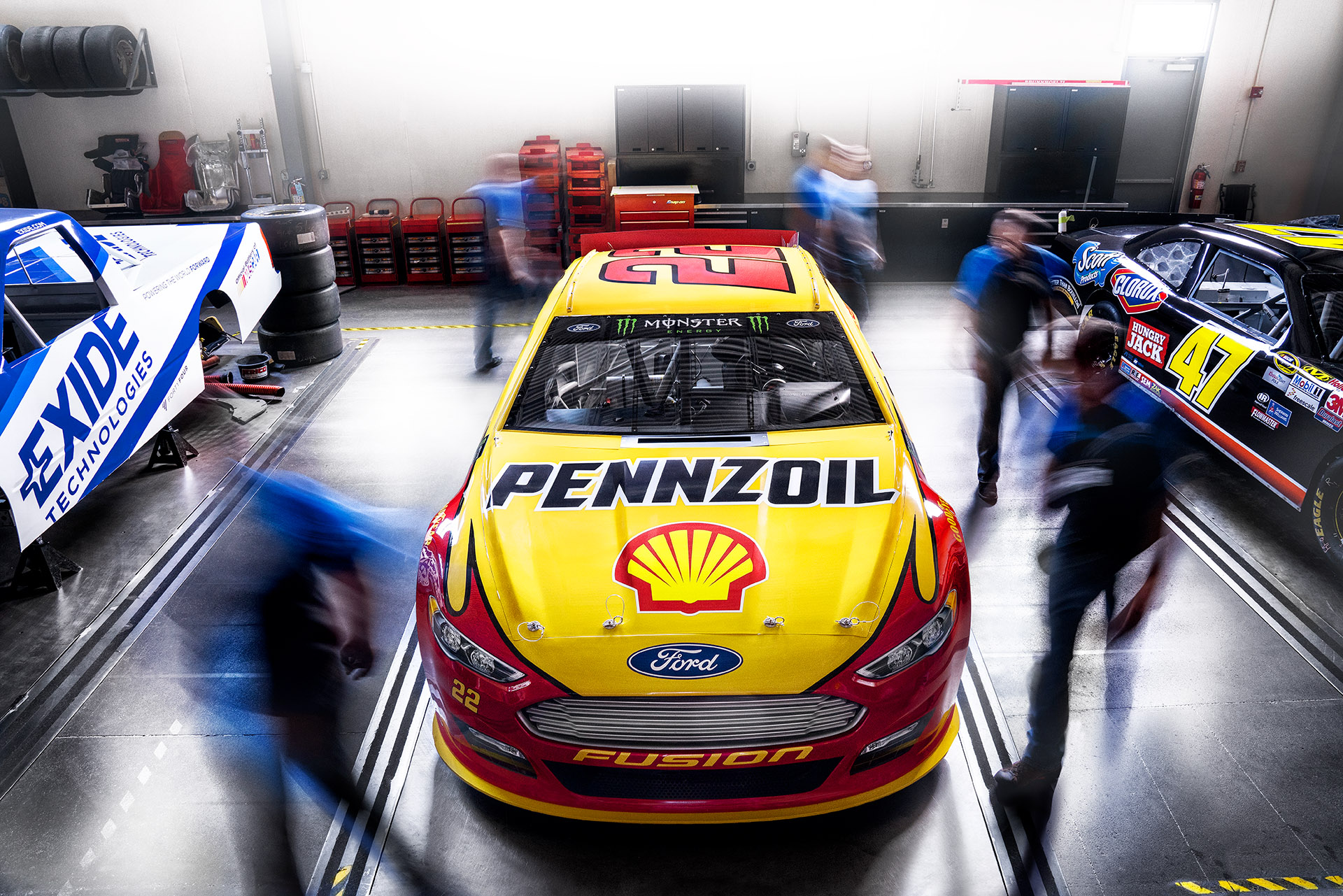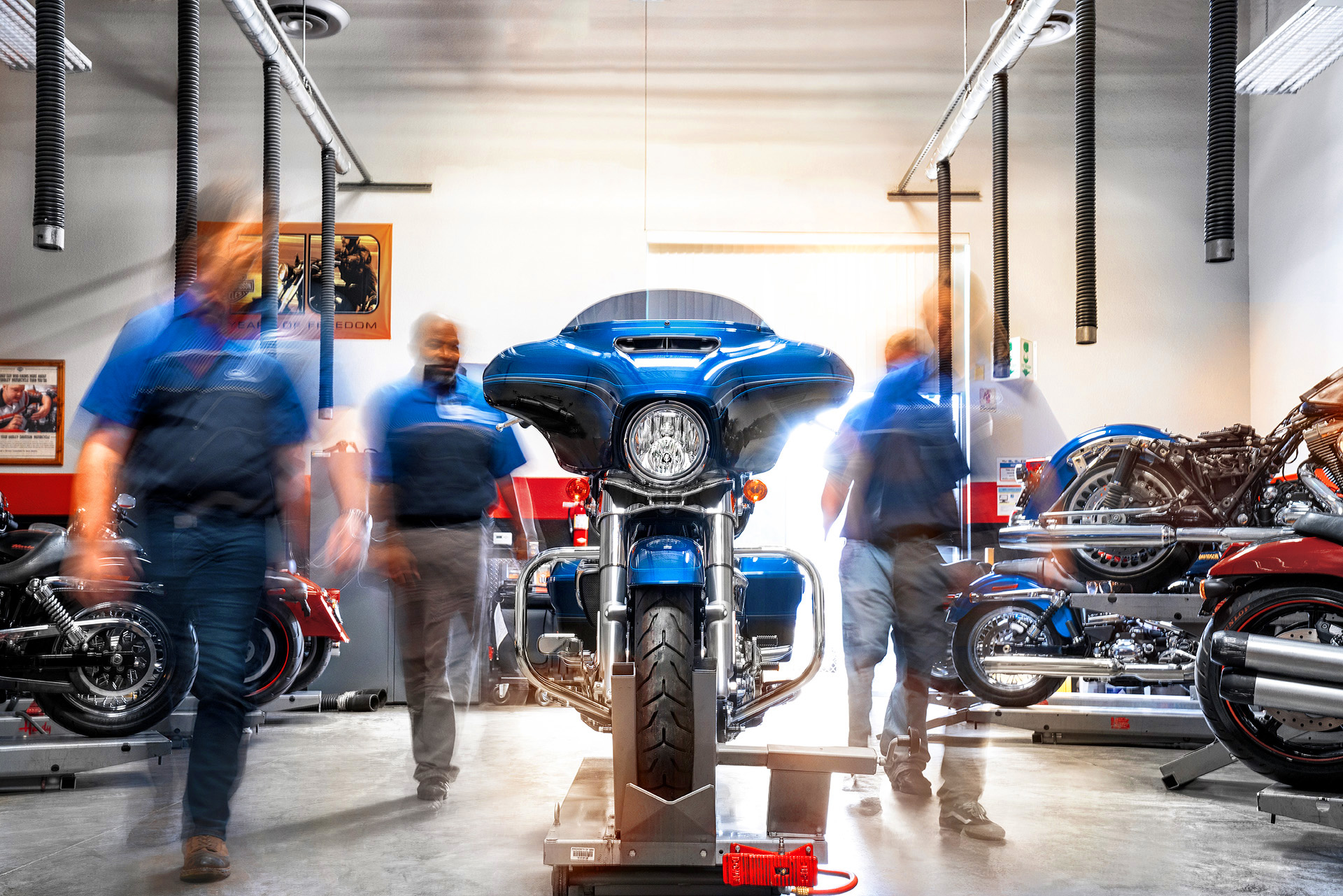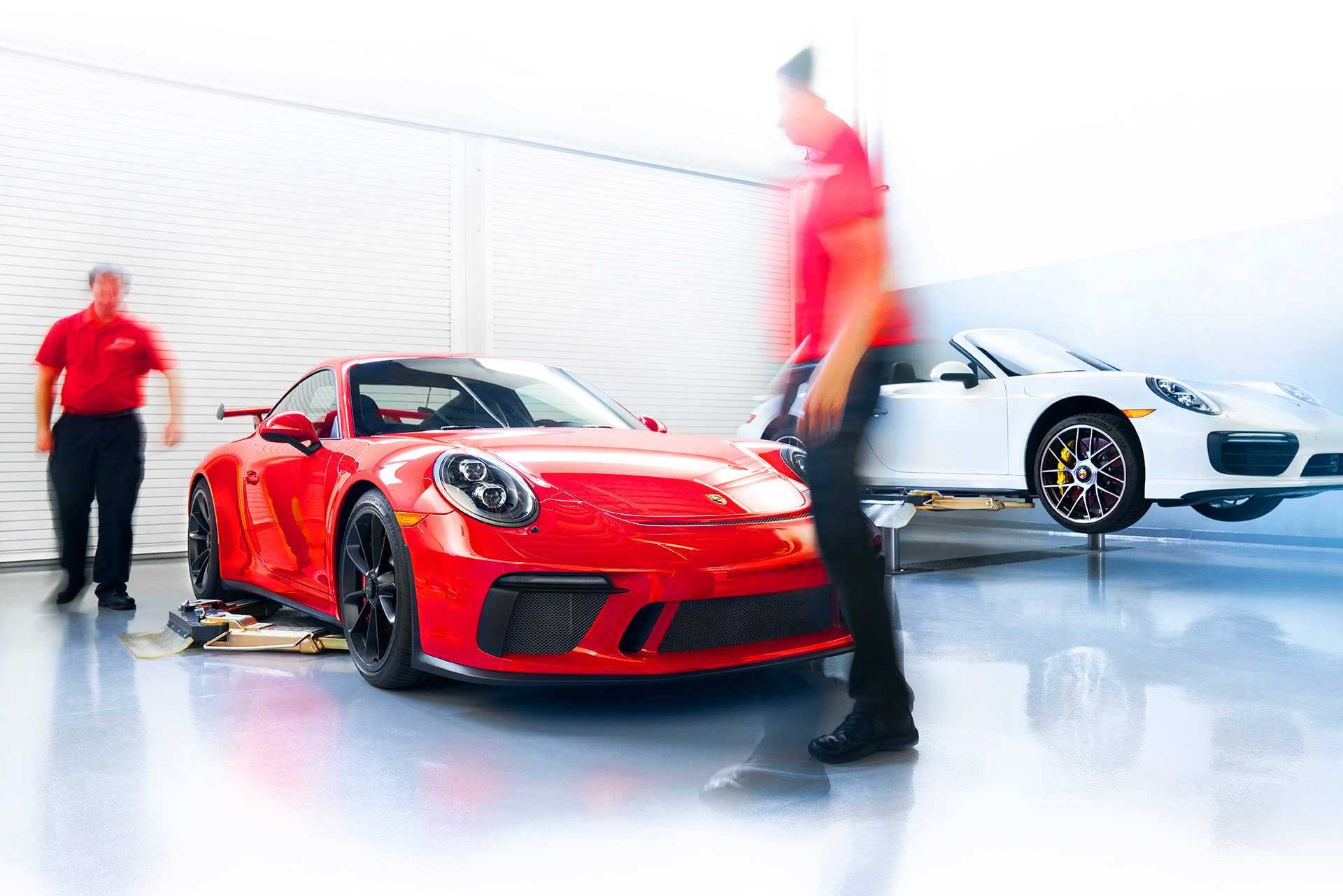A couple years ago I created a piece of work that was a photographic study in the motion of sports. It featured athletes from a number of different sports going through the motions they do on the field or court, in a studio. I let the shutter stay open and used bright lights to capture the motion to the camera, and balance the exposure with the strobe. This all allowed me to create the piece with only one exposure.
The result of these images showed the path that basketball players fly through the air and the swing of a football kickers leg. Running athletes became abstract streaks of light and color that seemed to flow from the action itself. The repetition of a ball bouncing crossed the image canvas like the notes in a score composed on a sheet of music.
The piece was received well and I began thinking on ways to apply it in principle to another subject. Enter Universal Technical Institute and my friend Pete. For years he and I have taken in many a craft beer together. Often while discussing the quality of the craft brews at hand we would concept ideas and he would draw the out for future reference. One day we formulated a visual idea that would let us show the motion of work, more specifically the shop around a vehicle and the business that exists.
In order to keep consistency, we would have the car or motorcycle as the constant (the still part of the image), and the people (students) would bring the life to the photograph. For a shot like this to be successful, planning is followed by planning that is followed by planning and you get the picture. Pete and I would visit locations and then go to lunch and he and I would concept. He sketched the car and environment and I would figure out the lighting and timing for these concepts to exist in the camera.
Beyond the lighting for the image, motion had to be choreographed and simplified. After all we were asking students and teachers to become models on a moment’s notice, a job which is a lot hard than it looks. We would direct what each person would be doing, as well as the speed they would be doing it at. For example, if a person was hammering on a car while another person walked by, the person hammering would have to do so in slow motion while the person walking would speed up. If we didn’t do this, the idea of working around the car would be lost into blur.

As we started to see our visions coming to life in the camera, we discovered is that the cars became atoms of a sort. The interactions and observations that we began to see were like watching protons circling a nucleus on this energy of learning and admiration. It resulted in images that lived with the same heartbeat of the previous series, but also differentiated itself in a beautiful way. Color and light were both very strong in the environments that we selected, helping for the automobile used in each one to pop out in the midst of the chaos surrounding it.

I hope you enjoy the series as much as we did making it for you.






Very inspiring!